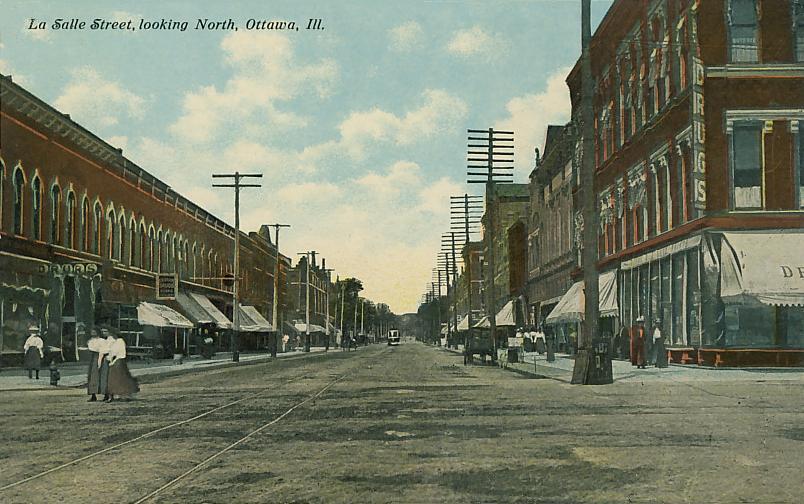|
Fort Beggs
Fort Beggs was an impromptu fort used one week in May during the 1832 Black Hawk War. Word about Indian attacks and massacres from the frontier led the residents of Plainfield, Illinois to convert the house of Rev. Stephen R. Beggs into a makeshift fort. It was located in Plainfield, Illinois on the DuPage River and a monument was erected by the Will County Centennial Committee in 1936 to mark its location. Panic at Fort Beggs Rev. Beggs' cabin was converted to a fort on a Thursday when logs from Rev. Beggs' barn and shed were used for a makeshift breastwork around the cabin and the entire structure housed 125 individuals. Rev. Beggs later explained their dire situation if attacked: We had four guns, some useless for shooting purposes. Ammunition was scarce. All of our pewter spoons, basins, and platters were soon molded by the women into bullets. As a next best means of defense, we got a good supply of axes, hoes, forks, sharp sticks, and clubs... By Sunday a group from Chic ... [...More Info...] [...Related Items...] OR: [Wikipedia] [Google] [Baidu] |
Plainfield, Illinois
Plainfield is a village in Will and Kendall counties, Illinois, United States. The population was 44,762 at the 2020 census. The village includes land in Will County's Plainfield and Wheatland townships, as well as Na-Au-Say and Oswego townships in Kendall County. With the growth in the Chicago suburbs in the 1990s and 2000s, the village has seen a population increase, from 4,500 in 1990 to 28,000 in 2000 to nearly 45,000 in 2016. It is between the cities of Naperville and Joliet. The village has established a community Preservation Commission and historic preservation ordinance. It is the home of the Lake Renwick Preserve, a county forest preserve used for birdwatching and other activities. Located south of Village Hall is Settlers' Park, which includes a lake, war monument, open space, and more. The park presents outdoor concerts to the public in the summer. History The area was called "Walkers' Grove" until it was platted as "Plainfield" in 1841. It was originally se ... [...More Info...] [...Related Items...] OR: [Wikipedia] [Google] [Baidu] |
Black Hawk War
The Black Hawk War was a conflict between the United States and Native Americans led by Black Hawk, a Sauk leader. The war erupted after Black Hawk and a group of Sauks, Meskwakis (Fox), and Kickapoos, known as the "British Band", crossed the Mississippi River, into the U.S. state of Illinois, from Iowa Indian Territory in April 1832. Black Hawk's motives were ambiguous, but he was apparently hoping to reclaim land sold to the United States in the disputed 1804 Treaty of St. Louis. U.S. officials, convinced that the British Band was hostile, mobilized a frontier militia and opened fire on a delegation from the Native Americans on May 14, 1832. Black Hawk responded by successfully attacking the militia at the Battle of Stillman's Run. He led his band to a secure location in what is now southern Wisconsin and was pursued by U.S. forces. Meanwhile, other Native Americans conducted raids against forts and colonies largely unprotected with the absence of the militia. Some Ho ... [...More Info...] [...Related Items...] OR: [Wikipedia] [Google] [Baidu] |
DuPage River
The DuPage River is a U.S. Geological Survey. National Hydrography Dataset high-resolution flowline dataThe National Map , accessed May 13, 2011 tributary of the Des Plaines River in the U.S. state of Illinois. Course The river begins as two individual streams. The West Branch of the DuPage River, long, starts at Campanelli Park in Schaumburg within Cook County and continues southward through the entire county of DuPage, including the towns of Bartlett, Wayne, Wheaton, Warrenville, Winfield and Naperville (including through its riverwalk), as well as McDowell Grove. The East Branch of the DuPage River, long, begins in Bloomingdale and flows southward through Glendale Heights, Glen Ellyn, Lisle, Woodridge, parts of Naperville and parts of Bolingbrook. St. Joseph Creek, a tributary of the river's East Branch, runs through the small town of Belmont. The two branches meet at the southern end of Knoch Knolls Park, between Naperville and Bolingbrook. The combined DuPage Riv ... [...More Info...] [...Related Items...] OR: [Wikipedia] [Google] [Baidu] |
Joseph Naper
Joseph Naper, also known as "Joe Naper" and "Captain Joseph Naper" (1798–1862), was an early Illinois pioneer, ship captain, shipbuilder, businessman, surveyor, state militia officer, soldier, politician, and city planner. In 1831, Naper and his brother John were credited with founding Naper's Settlement, the oldest Illinois community to be established west of Fort Dearborn, now Chicago. Naper's Settlement would be renamed Naperville, becoming the oldest town and first county seat of DuPage County, Illinois, later moved by county vote in 1868 and displaced by Wheaton. Early life Joseph Naper was born in Bennington, Vermont and traveled west with his parents during his youth to Ashtabula, Ohio, where he learned to be a ship builder from his father, Robert Naper, of Alwyn, Scotland.https://www.ancestry.com/family-tree/tree/22418570/family/pedigree?cfpid=340138207681 In 1809, Joseph Naper's sister Amy Naper married John Murray of Ashtabula, Ohio, who would later become one ... [...More Info...] [...Related Items...] OR: [Wikipedia] [Google] [Baidu] |
Fox River (Wisconsin)
The Fox River is a river in eastern Wisconsin in the Great Lakes region of the United States. It is the principal tributary of the Bay of Green Bay, and via the Bay, the largest tributary of Lake Michigan. The well-known city of Green Bay, one of the first European settlements in North America, is on the river at its mouth on lower Green Bay. Hydrographers divide the Fox into two distinct sections, the Upper Fox River, flowing from its headwaters in south-central Wisconsin northeasterly into Lake Winnebago, and the Lower Fox River, flowing from Lake Winnebago northeasterly to lower Green Bay. Together, the two sections give the Fox River a length of .U.S. Geological Survey. National Hydrography Dataset high-resolution flowline dataThe National Map, accessed December 19, 2011 Counting the distance through Lake Winnebago gives a total of . The Fox River (Green Bay tributary) should not be confused with the Fox River (Illinois River tributary) which also flows through Wisco ... [...More Info...] [...Related Items...] OR: [Wikipedia] [Google] [Baidu] |
Aurora, Illinois
Aurora is a city in the Chicago metropolitan area located partially in DuPage County, Illinois, DuPage, Kane County, Illinois, Kane, Kendall County, Illinois, Kendall, and Will County, Illinois, Will counties in the U.S. state of Illinois. Located primarily in DuPage and Kane counties, it is the List of cities in Illinois#Most populous places, second most populous city in Illinois, after Chicago, and the List of United States cities by population, 144th most populous city in the United States. The population was 197,899 at the 2010 United States Census, 2010 census, and was 180,542 as of the 2020 United States census, 2020 Census. Founded within Kane County, Aurora's city limits have expanded into DuPage, Kendall, and Will counties. Once a mid-sized manufacturing city, Aurora has grown since the 1960s. From 2000 to 2009, the U.S. Census Bureau ranked the city as the 46th fastest growing city with a population of over 100,000. In 1908, Aurora adopted the nickname "City of Lights" ... [...More Info...] [...Related Items...] OR: [Wikipedia] [Google] [Baidu] |
Ottawa, Illinois
Ottawa is a city located at the confluence of the navigable Illinois River and Fox River in LaSalle County, Illinois, United States. The Illinois River is a conduit for river barges and connects Lake Michigan at Chicago, to the Mississippi River, and North America's 25,000 mile river system. The population estimate was 18,742, as of 2020. It is the county seat of LaSalle County and it is the principal city of the Ottawa, IL Micropolitan Statistical Area. History Ottawa occupies a place on the Illinois River that has long been one end of a portage trail between the Mississippi River and Lake Michigan. Here the river was reliably deep enough for canoes. The North Portage Trail connected the site over land and water to the Chicago River. Ottawa was the site of the first of the Lincoln–Douglas debates on August 21, 1858. During the Ottawa debate, Stephen A. Douglas, leader of the Democratic Party, openly accused Abraham Lincoln of forming a secret bipartisan group of Congressm ... [...More Info...] [...Related Items...] OR: [Wikipedia] [Google] [Baidu] |
Chicago, Illinois
(''City in a Garden''); I Will , image_map = , map_caption = Interactive Map of Chicago , coordinates = , coordinates_footnotes = , subdivision_type = Country , subdivision_name = United States , subdivision_type1 = State , subdivision_type2 = Counties , subdivision_name1 = Illinois , subdivision_name2 = Cook and DuPage , established_title = Settled , established_date = , established_title2 = Incorporated (city) , established_date2 = , founder = Jean Baptiste Point du Sable , government_type = Mayor–council , governing_body = Chicago City Council , leader_title = Mayor , leader_name = Lori Lightfoot ( D) , leader_title1 = City Clerk , leader_name1 = Anna Valencia ( D) , unit_pref = Imperial , area_footnotes = , area_tot ... [...More Info...] [...Related Items...] OR: [Wikipedia] [Google] [Baidu] |
Indian Creek Massacre
The Indian Creek Massacre occurred on May 21, 1832 with the attack by a party of Native Americans on a group of United States settlers in LaSalle County, Illinois following a dispute about a settler-constructed dam that prevented fish from reaching a nearby Potawatomi village. The incident coincided with the Black Hawk War, but it was not a direct action of the Sauk leader Black Hawk and conflict with the United States. The removal of the dam was asked, was rejected by the settlers and between 40 and 80 Potawatomis and three Sauks attacked and killed fifteen settlers, including women and children.Paging Back Tale of Indian Creek Massacre... [...More Info...] [...Related Items...] OR: [Wikipedia] [Google] [Baidu] |
Forts In Illinois
A fortification is a military construction or building designed for the defense of territories in warfare, and is also used to establish rule in a region during peacetime. The term is derived from Latin ''fortis'' ("strong") and ''facere'' ("to make"). From very early history to modern times, defensive walls have often been necessary for cities to survive in an ever-changing world of invasion and conquest. Some settlements in the Indus Valley civilization were the first small cities to be fortified. In ancient Greece, large stone walls had been built in Mycenaean Greece, such as the ancient site of Mycenae (famous for the huge stone blocks of its 'cyclopean' walls). A Greek '' phrourion'' was a fortified collection of buildings used as a military garrison, and is the equivalent of the Roman castellum or English fortress. These constructions mainly served the purpose of a watch tower, to guard certain roads, passes, and borders. Though smaller than a real fortress, they acte ... [...More Info...] [...Related Items...] OR: [Wikipedia] [Google] [Baidu] |
Black Hawk War Forts
Black is a color which results from the absence or complete absorption of visible light. It is an achromatic color, without hue, like white and grey. It is often used symbolically or figuratively to represent darkness. Black and white have often been used to describe opposites such as good and evil, the Dark Ages versus Age of Enlightenment, and night versus day. Since the Middle Ages, black has been the symbolic color of solemnity and authority, and for this reason it is still commonly worn by judges and magistrates. Black was one of the first colors used by artists in Neolithic cave paintings. It was used in ancient Egypt and Greece as the color of the underworld. In the Roman Empire, it became the color of mourning, and over the centuries it was frequently associated with death, evil, witches, and magic. In the 14th century, it was worn by royalty, clergy, judges, and government officials in much of Europe. It became the color worn by English romantic poets, businessmen a ... [...More Info...] [...Related Items...] OR: [Wikipedia] [Google] [Baidu] |








